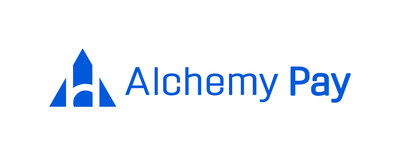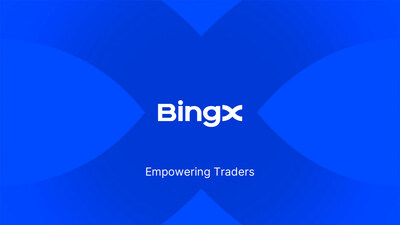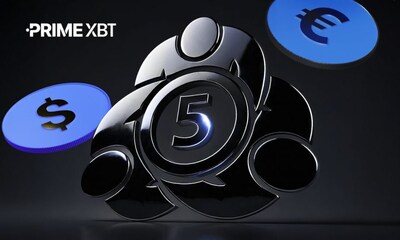AEON Pay Now Supports Crypto Checkout in Nigeria with Local Bank Transfer to Merchants
HONG KONG, July 11, 2025 /PRNewswire/ — AEON, the next generation crypto payment framework, is excited to announce the expansion of its Web3 mobile payment solution, AEON Pay, into Nigeria. AEON Pay now supports local bank transfer in Nigeria on its Telegram miniapp and dApps, unlocking seamless Web3-powered crypto payment through direct merchant bank transfers.
With this new integration, Nigerian users can now shop at participating merchants, input an amount in Naira (NGN), and choose their preferred crypto and wallet to complete the payment. AEON Pay automatically handles the asset conversion and initiates a local bank transfer to the merchant—offering a user experience that blends the power of crypto with the familiarity of mobile banking.
This feature is compatible with all banks supported by the Nigeria Inter-Bank Settlement System (NIBSS), a central financial infrastructure institution that facilitates interbank settlements and digital payments across Nigeria, ensuring nationwide coverage and reliable local settlement, which marks a significant milestone in enabling real-world crypto utilities through local payment infrastructure.
Why Bank Transfers in Nigeria?
Bank transfers are one of the most trusted and widely used payment methods in Nigeria. According to NIBSS, bank transfers accounted for over 70% of all digital payments in the country in 2023, overtaking card payments and mobile money. With millions of Nigerians relying on bank accounts as their primary payment rail, integrating this system was essential to meet local user behavior and expectations.
By tapping into the existing bank infrastructure through NIBSS, AEON Pay makes crypto feel as intuitive as cash. Whether shopping, dining, or accessing local services, users can now experience real-world crypto utility in a familiar and accessible way.
AEON’s Expansion into Africa
This launch signals AEON’s official entry into Africa, a region with rapidly growing crypto adoption and strong demand for practical utility. Nigeria, often referred to as Africa’s crypto hub, consistently ranks among the top countries for crypto usage globally (Chainalysis, 2023). The country’s combination of digital-savvy youth, mobile-first infrastructure, and underbanked populations makes it a key entry point for meaningful Web3 utility.
AEON’s mission to bring crypto into daily life now extends beyond Asia, with LATAM integrations also on the horizon. By adapting to local financial rails like bank transfers in Nigeria, AEON ensures its technology remains both innovative and inclusive.
A Seamless Web3 Mobile Payment Experience
AEON Pay, the Web3 mobile payment product by AEON, is accessible through Telegram MiniApps, leading wallet dApps, and popular crypto exchange platforms. Already available across 20 million+ merchants and 10,000+ global brands in Southeast Asia, including McDonald’s, Pizza Hut, and UNIQLO, AEON Pay brings scan-to-pay and bank-transfer payment flows into the hands of crypto users.
The newly added Nigeria bank payment option is fully integrated into this flow, allowing for:
- Spend crypto directly in NGN: Real-time NGN price input, no need to cash out manually or use centralized exchanges.
- Support local merchants: From small shops to large businesses, payments go straight and instant to Nigerian bank accounts.
- Familiar UX, powered by Web3: Users enjoy the benefits of crypto with the intuitive simplicity of entering a local amount and confirming with a wallet.
- Access via Telegram, wallets & exchanges: AEON Pay is built where users already are.
AEON is committed to building a truly global crypto payment network that adapts to real-world user habits and meets people where they are. By integrating local payment methods like bank transfers in Nigeria, AEON bridges the gap between decentralized finance and everyday commerce. This launch marks an entry into a new market, and also reflects AEON’s broader mission to make crypto practical, accessible, and usable in the daily lives of people around the world. From Asia to Africa and soon to Latin America, AEON is laying the foundation for a future where crypto payments are as easy and intuitive as any local payment method.
About AEON
AEON is the next-generation crypto payment framework, built for AI to drive intelligent, automated payments across Web3 and simplify how crypto works in real life. With omni-chain support, AEON’s AI Payments system allows intelligent agents to manage and automate transactions, payments, subscriptions, and remittances for users.
With offerings like Web3 Mobile Payment that allows users to pay with crypto across 10,000 brands at 20+ million retail merchants in SEA, Africa and Latin America, Online Web3 Payment, Swap Pay, and a growing suite of AI-integrated payment services, AEON aims to create a future of crypto finance that’s intelligent, scalable, and borderless, where AI meets real life through seamless, scalable payments for next billion of users.
Website | X | Telegram | Medium | AEON Pay
![]() View original content:https://www.prnewswire.com/news-releases/aeon-pay-now-supports-crypto-checkout-in-nigeria-with-local-bank-transfer-to-merchants-302503264.html
View original content:https://www.prnewswire.com/news-releases/aeon-pay-now-supports-crypto-checkout-in-nigeria-with-local-bank-transfer-to-merchants-302503264.html
SOURCE AEON

Featured Image: depositphotos @ piter2121











